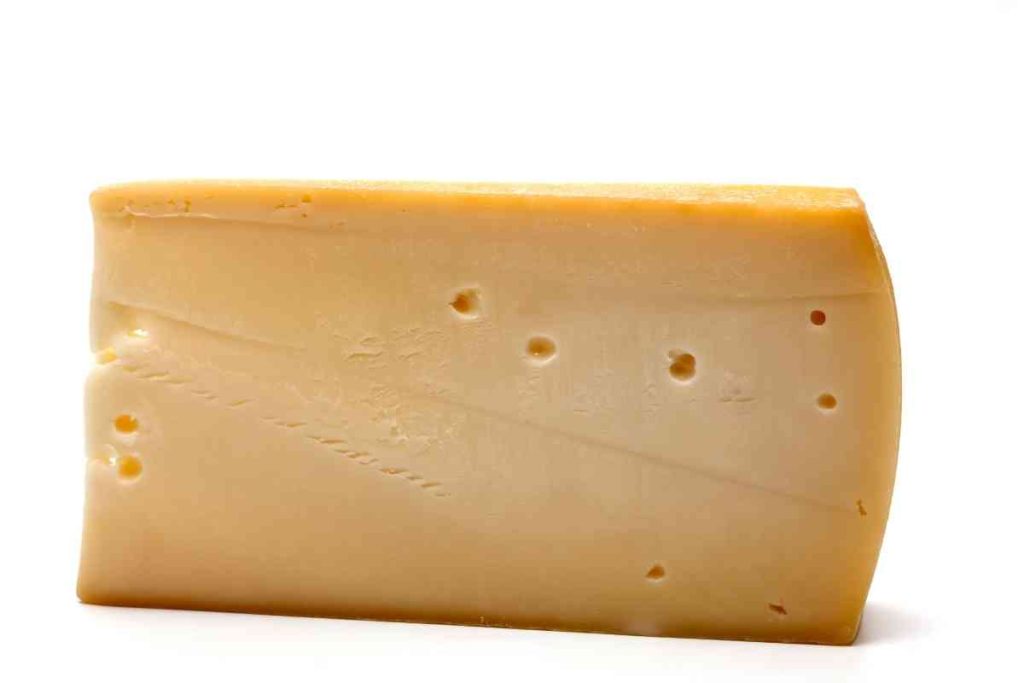This article may contain affiliate links and if you make a purchase after clicking on a link, we may earn a small commission at no additional cost to you.
If you are vegan, we both know how challenging scouring the aisles for a non-dairy cheese option is. But if you live in Italy, Asiago cheese is one cheese you’d love to try, as it is pretty popular in Italian homes.
But whoa, as a vegan, we MUST double-check if the product is dairy-free and plant-based. And sometimes we end up in the valley of disappointment, knowing even the most promising cheeses perfect for salads and vegetables could contain rennet. But is asiago cheese vegetarian?
No, asiago cheese is not good for vegetarians. Sadly, this is another day for a sinking feeling because Asiago is a cow’s milk cheese made with rennet.
What Is Vegetarian Cheese?
To succinctly put, vegan cheese is a 100% non-dairy, plant-based cheese. They are usually made from peas, soybeans, coconut, cashews, or almonds –all plant-based.
They range from soft, fresh cheese to aged and hard grateable cheese like the everyday cheeses. However, it is no longer vegan once it is made with even a dent of animal parts.
Therefore, Asiago cheese is not a vegan choice and should be avoided. Because it contains rennet, an enzyme in the stomach lining of a calf or goat, it is far from what vegetarians should eat.
Also, Parmesan, Manchego, Pecorino Romano, Gruyère, and Gorgonzola cheeses should be looked at with both eyes open since they aren’t officially vegetarian. Although, there are non-dairy versions of Parmesan, Gouda, Cheddar, Mozzarella, and Cream cheese.
It is best if you have the perfect vegan cheese recipe. That way, you’re rest assured to replace the milk and culture with non-dairy milk such as oat milk, coconut milk, almond milk, cashew milk, and more.
Still not convinced?
Keep reading!
What Is Asiago Cheese?

Asiago is a very popular Italian cheese made from cow’s milk cheese, and each slice or block paired with casseroles, pizza, or sandwich is filled with an exciting bite.
The cheese comes with a D.O.P. status, meaning you are likely to get the authentic Asiago only around the alpine area of the Asiago plateau in the Trentino-Alto Adige and Veneto regions.
That doesn’t mean other countries can’t make a high-quality Asiago-style cheese. No matter the location, the real thing, always have a D.O.P. or D.P.O sticker. In addition, pricing fluctuates based on the region and aging period. But imported D.O.P. Asiago cheese is always pricey.
And depending on how long the cheese is aged, the texture can range from fresh, medium, to hard. Aside from that, there are two variants of Asiago cheese —fresh and aged varieties. The Fresh Asiago cheese is either white or pale yellow with a thin rind.
It also has small, irregular holes throughout the interior. The texture is medium (not soft; not hard), almost like a firm sponge cake, with a buttery aroma and slightly sweet and sour flavor.
Meanwhile, Aged Asiago can be pale yellow to amber yellow with a firm texture. It has a strong flavor with a nutty and yeasty aroma. The Fresh Asiago is perfect grated, sliced, cubed, or melted for sandwiches, crackers, bread, or atop casseroles, pizza, and cheesy pasta dishes.
On the other hand, Aged Asiago is best left for grating and shaving into sauces, soups, pasta, or on top of salads.
How Asiago Is Made?
Remember we said there are two variants: Fresh and Aged. And both are made differently but with similar ingredients.
Fresh Asiago uses whole milk. Meanwhile, aged Asiago is a mixture of whole and skim milk. However, both are heated to 95 F before adding rennet and enzymes, forming curds. Then after being kneaded, it is cooked to a higher temperature of about 105 to 115 F.
If it is a fresh Asiago, the maker then salts and presses it dry for two days —soaking in a brine for two days.
Finally, it is dry-aged for up to a month. As for aged Asiago, the curds are drained off whey in molds. Then it is either rubbed with salt or soaked in brine and aged for several months to two years.
Conclusion: Is Asiago Cheese Vegetarian?
Bottom line: Asiago cheese isn’t vegetarian. But Parmesan and Pecorino Romano are good substitutes. People who can’t find Aged Asiago cheese go with these alternatives, just that you have to search for the vegan version.
But if you can’t. Don’t worry. There are many dairy-free and vegan options to meet your diet and lifestyle, whether you are lactose intolerant. I would recommend traditional paneer and cottage cheese. They are rennet-free and thickened with an acidic substance like lemon and vinegar juice.
Vegetarian artisan cheeses are another go-to option when all hope is lost!
Related Posts: